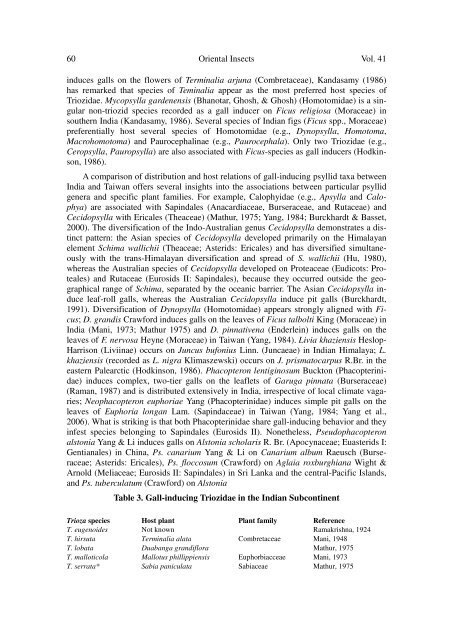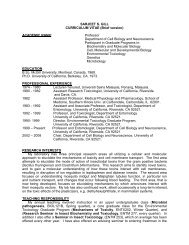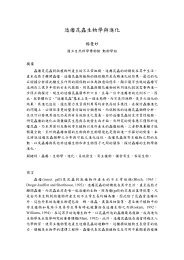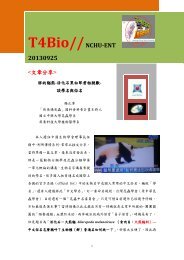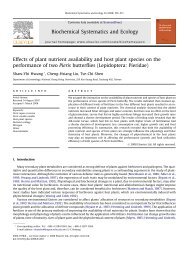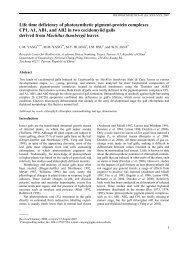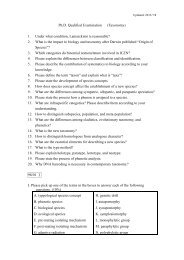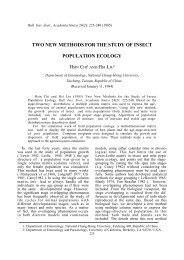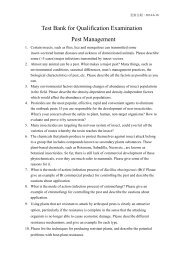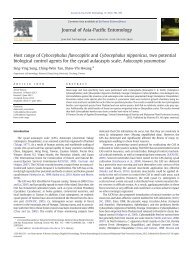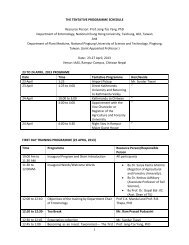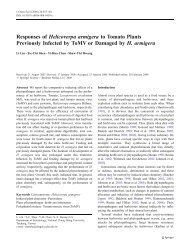diversity, richness, and patterns of radiation among gall-inducing ...
diversity, richness, and patterns of radiation among gall-inducing ...
diversity, richness, and patterns of radiation among gall-inducing ...
You also want an ePaper? Increase the reach of your titles
YUMPU automatically turns print PDFs into web optimized ePapers that Google loves.
60 Oriental Insects Vol. 41induces <strong>gall</strong>s on the flowers <strong>of</strong> Terminalia arjuna (Combretaceae), K<strong>and</strong>asamy (1986)has remarked that species <strong>of</strong> Teminalia appear as the most preferred host species <strong>of</strong>Triozidae. Mycopsylla gardenensis (Bhanotar, Ghosh, & Ghosh) (Homotomidae) is a singularnon-triozid species recorded as a <strong>gall</strong> inducer on Ficus religiosa (Moraceae) insouthern India (K<strong>and</strong>asamy, 1986). Several species <strong>of</strong> Indian figs (Ficus spp., Moraceae)preferentially host several species <strong>of</strong> Homotomidae (e.g., Dynopsylla, Homotoma,Macrohomotoma) <strong>and</strong> Paurocephalinae (e.g., Paurocephala). Only two Triozidae (e.g.,Ceropsylla, Pauropsylla) are also associated with Ficus-species as <strong>gall</strong> inducers (Hodkinson,1986).A comparison <strong>of</strong> distribution <strong>and</strong> host relations <strong>of</strong> <strong>gall</strong>-<strong>inducing</strong> psyllid taxa betweenIndia <strong>and</strong> Taiwan <strong>of</strong>fers several insights into the associations between particular psyllidgenera <strong>and</strong> specific plant families. For example, Calophyidae (e.g., Apsylla <strong>and</strong> Calophya)are associated with Sapindales (Anacardiaceae, Burseraceae, <strong>and</strong> Rutaceae) <strong>and</strong>Cecidopsylla with Ericales (Theaceae) (Mathur, 1975; Yang, 1984; Burckhardt & Basset,2000). The diversification <strong>of</strong> the Indo-Australian genus Cecidopsylla demonstrates a distinctpattern: the Asian species <strong>of</strong> Cecidopsylla developed primarily on the Himalayanelement Schima wallichii (Theaceae; Asterids: Ericales) <strong>and</strong> has diversified simultaneouslywith the trans-Himalayan diversification <strong>and</strong> spread <strong>of</strong> S. wallichii (Hu, 1980),whereas the Australian species <strong>of</strong> Cecidopsylla developed on Proteaceae (Eudicots: Proteales)<strong>and</strong> Rutaceae (Eurosids II: Sapindales), because they occurred outside the geographicalrange <strong>of</strong> Schima, separated by the oceanic barrier. The Asian Cecidopsylla induceleaf-roll <strong>gall</strong>s, whereas the Australian Cecidopsylla induce pit <strong>gall</strong>s (Burckhardt,1991). Diversification <strong>of</strong> Dynopsylla (Homotomidae) appears strongly aligned with Ficus;D. gr<strong>and</strong>is Crawford induces <strong>gall</strong>s on the leaves <strong>of</strong> Ficus talbolti King (Moraceae) inIndia (Mani, 1973; Mathur 1975) <strong>and</strong> D. pinnativena (Enderlein) induces <strong>gall</strong>s on theleaves <strong>of</strong> F. nervosa Heyne (Moraceae) in Taiwan (Yang, 1984). Livia khaziensis Heslop-Harrison (Liviinae) occurs on Juncus bufonius Linn. (Juncaeae) in Indian Himalaya; L.khaziensis (recorded as L. nigra Klimaszewski) occurs on J. prismatocarpus R.Br. in theeastern Palearctic (Hodkinson, 1986). Phacopteron lentiginosum Buckton (Phacopterinidae)induces complex, two-tier <strong>gall</strong>s on the leaflets <strong>of</strong> Garuga pinnata (Burseraceae)(Raman, 1987) <strong>and</strong> is distributed extensively in India, irrespective <strong>of</strong> local climate vagaries;Neophacopteron euphoriae Yang (Phacopterinidae) induces simple pit <strong>gall</strong>s on theleaves <strong>of</strong> Euphoria longan Lam. (Sapindaceae) in Taiwan (Yang, 1984; Yang et al.,2006). What is striking is that both Phacopterinidae share <strong>gall</strong>-<strong>inducing</strong> behavior <strong>and</strong> theyinfest species belonging to Sapindales (Eurosids II). Nonetheless, Pseudophacopteronalstonia Yang & Li induces <strong>gall</strong>s on Alstonia scholaris R. Br. (Apocynaceae; Euasterids I:Gentianales) in China, Ps. canarium Yang & Li on Canarium album Raeusch (Burseraceae;Asterids: Ericales), Ps. floccosum (Crawford) on Aglaia roxburghiana Wight &Arnold (Meliaceae; Eurosids II: Sapindales) in Sri Lanka <strong>and</strong> the central-Pacific Isl<strong>and</strong>s,<strong>and</strong> Ps. tuberculatum (Crawford) on AlstoniaTable 3. Gall-<strong>inducing</strong> Triozidae in the Indian SubcontinentTrioza species Host plant Plant family ReferenceT. eugenoides Not known Ramakrishna, 1924T. hirsuta Terminalia alata Combretaceae Mani, 1948T. lobata Duabanga gr<strong>and</strong>iflora Mathur, 1975T. malloticola Mallotus phillippiensis Euphorbiacceae Mani, 1973T. serrata* Sabia paniculata Sabiaceae Mathur, 1975


